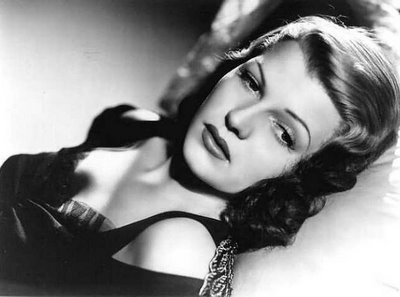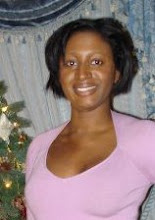Flashback to Film Noir and the Original Bad Chick

"The dark lady, the spider woman, the evil seductress who tempts man and brings about his destruction is among the oldest themes of art, literature, mythology, and religion in western culture...Film is a male fantasy as is most of our art...Film noir is hardly 'progressive' in these terms -- it does not present us with role models who defy their fate and triumph over it. But it does give us one of the few periods of film in which women are active, not static symbols, are intellient and powerful, if destructively so, and derive power, not weakness, from their sexuality"
Janey Place, "Women in Film Noir", Women in Film Noir
Cinema is one of my great passions. Ever since I was old enough to contemplate its artistic form and greater meaning, I have been studying them, critiquing them, and enjoying them. One of my favorite film eras happens to be film noir ("black film), a genre that surfaced in the 40s and 50s featuring a grim, urban setting in which the male protagonist dies, meets defeat, or achieves meaningless victory in the end. Low-key lighting and a somber ambience are two essential characteristics of film noir in addition to brooding characters, corruption, detectives, and the seedy side of the big city. (Think of the stylistic mood and feel of this year's Sin City). But the one most fascinating aspect of film noir, in my opinion, is the femme fatale (fatal woman).
The femme fatale is a fascinating figure conjured by the male imagination: a woman that oozes sensuality and sexuality amid devastating physical beauty that in some way or another leads to the downfall of the male protagonist. My first film noir was the 1946 The Killers with Ava Gardner. Gorgeous by any standard Ava Gardner's Kitty Collins added much of the drama to the Swede's already precarious situation. Double Indemnity, The Postman Always Rings Twice, Kiss Me Deadly, The Maltese Falcon and The Lady from Shanghai are some of the most popular film noirs from this period. I was always so fascinated by the femme fatale. Though I knew instinctively that there was underlying sexism and male privilege imbued in her representation, I appreciated the fact that she was independent, beautiful, intelligent, and active. She moves and changes the action in the course of the film --- she was no shrinking violet, she was the film.

Which is why I was always so angry that she was punished for this at the end of the film. She was always killed, imprisoned or severely disciplined in some way, shape or form. Its as if her deadly, original sin was the fact that she chose self-interest and self-expression, sensuality and independence (sexually and publically) over devotion to men and the domestic sphere. Its as if her ambition was out of character for a woman and for this, she needed to be chastized. In essence, the femme fatale was a symbol of the cultural anxities (male in nature) of the times.
As a master's degree candidate at NYU, I propelled my research into the femme fatale full force. My thesis became tracing the Black female femme fatale (or jezebel) through 20th century American film and how these representations impacted Black female sexuality. I looked at women such as Dorothy Dandridge in Carmen Jones, Lena Horn in A Cabin in the Sky, Robin Givens in Harlem Nights and Boomerang, and Tracy Camilia Johns in She's Gotta Have It. While femme fatales do have consistent characteristics, I found some differences when it came to Black women, primarily that even in contemporary film, she still has to be caughyt and punished at the end.

The femme fatale has gracefully traveled through American cinema, morphing and adapting to the mores of the time albeit some characteristics remaining consistent. Cinema such as Kathleen Turner in Body Heat, Madonna in Body of Evidence, and Linda Fiorentino in The Last Seduction, Liv Tyler in One Night at McCool's, Virginia Madsen inThird Degree Burn, represent neo-femme fatales apropos to the times. So the question becomes: what cultural anxieties are these women representing?
I believe this form of film is so important for a number of reasons:
- I find film noir movies to be, stylistically, very impressive with the low lighting, use of shadows to create suspense and mystery, the grit and sheer rawness of it all leaves a palpable, salty quality with the audience
- I find film noir to be a direct testment on the mores and changes of society.
- The portrayal of women is very interesting and rich for discussion.
Femme fatales in essence are the original bad chicks: unfaltering, gorgeous, beautiful and ambitious, these women knew what they wanted and actively pursued it. Film noir is such an important part of film history and I believe these roots are steadily being forgotten. I just can't wait for the film that accurately portrays film noir at its roots and one where the femme fatale is not a singular representative of male fantasy and desire. Or maybe instead of waiting for the film, I should do it my damn self!
pukka (also pucka) -- adj. :1. Authentic; genuine. 2. Good of its kind; first-class.
"I have invented a mask that makes me look like anybody. People will not even turn around in the streets" ---Gaston Leroux, Phantom of the Opera


1 Comments:
Hi,
You stopped by my blog a few weeks ago, so I wanted to check out yours. I totally agree with your assessment in this piece about depictions of women on film. At least white women get to be the center of a film--black women are lucky if their characters have any complexity at all.
AD
Enregistrer un commentaire
<< Home